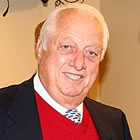
Tommy Lasorda, photo by Phil Konstantin
Before he was Hall of Fame manager of the Los Angeles Dodgers, Tommy Lasorda was a scout and coach for the team. And part of his duties was to teach the rookies. So, in that tradition, there is a lesson in Tommy’s latest health scare: if you think you may be having a heart attack, get to the hospital ASAP, preferably a hospital that performs emergency angioplasty. Continue reading

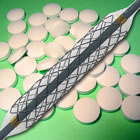 I’m looking at this morning’s news and I’m seeing headlines like these: “Stents Overused in Stable Heart Patients” (WebMD), “Pills as good as stents for stable heart patients” (Reuters), “No Extra Benefits Are Seen in Stents for Coronary Artery Disease” (New York Times), and “Stents no better than pills for some heart patients” (MassDevice) — and I think I have time-traveled half a decade back to March 2007 when the results of the COURAGE study were presented at the American College of Cardiology Annual Meeting.
I’m looking at this morning’s news and I’m seeing headlines like these: “Stents Overused in Stable Heart Patients” (WebMD), “Pills as good as stents for stable heart patients” (Reuters), “No Extra Benefits Are Seen in Stents for Coronary Artery Disease” (New York Times), and “Stents no better than pills for some heart patients” (MassDevice) — and I think I have time-traveled half a decade back to March 2007 when the results of the COURAGE study were presented at the American College of Cardiology Annual Meeting.  Forgive the perverse Shakespearean pun in the title but, as the Bard wrote: “What’s in a name? That which we call a rose by any other name would smell as sweet.” My topic is pretty much the polar opposite of roses, but the whole concept of labels and what we call things has become increasingly important. It’s one that I touched on in
Forgive the perverse Shakespearean pun in the title but, as the Bard wrote: “What’s in a name? That which we call a rose by any other name would smell as sweet.” My topic is pretty much the polar opposite of roses, but the whole concept of labels and what we call things has become increasingly important. It’s one that I touched on in 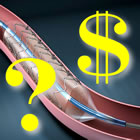 The question of the day, regarding whether or not to stent a coronary artery, is now being brought to the forefront by the U.S. government in the form of a
The question of the day, regarding whether or not to stent a coronary artery, is now being brought to the forefront by the U.S. government in the form of a 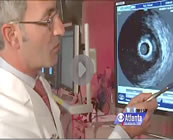
 Dr. Ralph Brindis is the Immediate Past President of the American College of Cardiology and helmed the National Cardiovascular Data Registry (NCDR) since its inception in 1997 — this is the registry that was the source for the data analyzed and reported in yesterday’s JAMA study, “
Dr. Ralph Brindis is the Immediate Past President of the American College of Cardiology and helmed the National Cardiovascular Data Registry (NCDR) since its inception in 1997 — this is the registry that was the source for the data analyzed and reported in yesterday’s JAMA study, “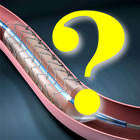 A major study of a half-million angioplasties, published today1 in the Journal of the American Medical Association (JAMA), refutes two major myths about angioplasty and stent use in the United States: myth #1, that angioplasty is vastly overused and unnecessary in most cases; and myth #2, that most angioplasty is used in stable patients and therefore has little or no benefit over drugs in reducing death or heart attacks.
A major study of a half-million angioplasties, published today1 in the Journal of the American Medical Association (JAMA), refutes two major myths about angioplasty and stent use in the United States: myth #1, that angioplasty is vastly overused and unnecessary in most cases; and myth #2, that most angioplasty is used in stable patients and therefore has little or no benefit over drugs in reducing death or heart attacks.

